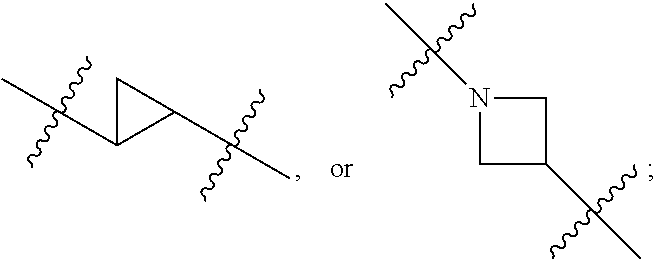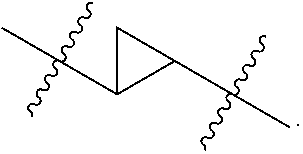Secondary alcohol substituted triazoles as pde10 inhibitors
a technology of pde10 inhibitors and alcohol substituted triazoles, which is applied in the field of compounding, can solve the problems of high noncomplicance or discontinuation rate of medication, lack of efficacy, and dissatisfaction with therapy
- Summary
- Abstract
- Description
- Claims
- Application Information
AI Technical Summary
Benefits of technology
Problems solved by technology
Method used
Image
Examples
example 1
[0192]
(S)-1-(3-methyl-1-(2-methyl-6-(3-(1-methyl-1H-benzo[d]imidazol-2-yl)azetidin-1-yl)pyrimidin-4-yl)-1H-1,2,4-triazol-5-yl)ethanol (Example 1)
[0193]A solution of Intermediate 2 (11.0 g, 35.6 mmol) in AcOH (100 mL) was added to crude Intermediate 13 (24.2 g, 89 mmol, prepared by heating the corresponding primary amide in neat DMA-DMA at 50° C. overnight followed by removal of excess DMA-DMA by rotary evaporation). The reaction mixture was allowed to stir for 10 min at room temperature and then heated at 80° C. for 1 h. Sampling of the reaction by LCMS suggested cyclization to the silyl-protected hydroxy triazole had occurred. The reaction was allowed to stir at 80° C. for an additional 16 h at which point complete de-silylation of the hydroxy group had occurred. The reaction was cooled to room temperature, poured carefully over saturated aqueous sodium bicarbonate solution (200 mL), and the aqueous layer was made basic to pH-8 by the addition of solid sodium bicarbonate. The solut...
example 2
[0194]
(R)-1-(3-methyl-1-(2-methyl-6-(3-(1-methyl-1H-benzo[d]imidazol-2-yl)azetidin-1-yl)pyrimidin-4-yl)-1H-1,2,4-triazol-5-yl)ethanol (Example 2)
[0195]To a solution of Intermediate 2 (1.2 g, 3 9 mmol) in AcOH (35 mL) was added the DME solution of Intermediate 14 (5.1 g, 18.7 mmol). The reaction mixture was allowed to stir for 10 min at room temperature and then heated at 80° C. for 30 min. Sampling of the reaction by LCMS suggested cyclization to the silyl-protected hydroxy triazole had occurred. The DME was removed by rotary evaporation and the remaining mixture was allowed to stir at 80° C. for an additional 16 h at which point complete de-silylation of the hydroxy group had occurred. The reaction was cooled to room temperature, poured carefully over saturated aqueous sodium bicarbonate solution (200 mL), and the aqueous layer was made basic to pH-8 by the addition of solid sodium bicarbonate. The solution was extracted with ethyl acetate (200 mL) and the organic layer was dried o...
example 3
[0196]
2,2,2-trifluoro-1-(3-methyl-1-(2-methyl-6-(3-(1-methyl-1H-benzo[d]imidazol-2-yl)azetidin-1-yl)pyrimidin-4-yl)-1H-1,2,4-triazol-5-yl)ethanol (Example 3)
[0197]To a solution of Intermediate 2 (5.5 g, 17 8 mmol) in AcOH (60 mL) was added the DME solution of Intermediate 18 (7.5 g, 35.6 mmol) and the reaction was heated at 80° C. for 1 h. Sampling of the reaction by LCMS suggested cyclization to the triazole had occurred with concomitant desilylation of the hydroxy group. The reaction was cooled to room temperature and brought to pH-8 by the slow addition of saturated aqueous sodium bicarbonate. The aqueous phase was extracted with EtOAc and the organic layer was dried over sodium sulfate, filtered, and concentrated. The crude product was purified by silica gel chromatography (0-10% 2-propanol / DCM) to give racemic Example 3. MS: m / z=459.3 (M+H).
[0198]The racemic mixture was separated by preparative chiral SFC on a Chiraltech ID column (2 cm id×25 cm length) eluting with 65% carbon ...
PUM
| Property | Measurement | Unit |
|---|---|---|
| temperature | aaaaa | aaaaa |
| length | aaaaa | aaaaa |
| temperature | aaaaa | aaaaa |
Abstract
Description
Claims
Application Information
 Login to View More
Login to View More - R&D
- Intellectual Property
- Life Sciences
- Materials
- Tech Scout
- Unparalleled Data Quality
- Higher Quality Content
- 60% Fewer Hallucinations
Browse by: Latest US Patents, China's latest patents, Technical Efficacy Thesaurus, Application Domain, Technology Topic, Popular Technical Reports.
© 2025 PatSnap. All rights reserved.Legal|Privacy policy|Modern Slavery Act Transparency Statement|Sitemap|About US| Contact US: help@patsnap.com



